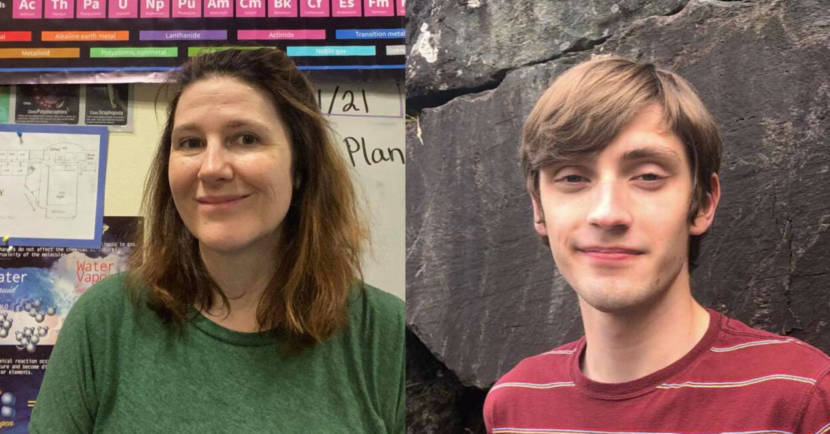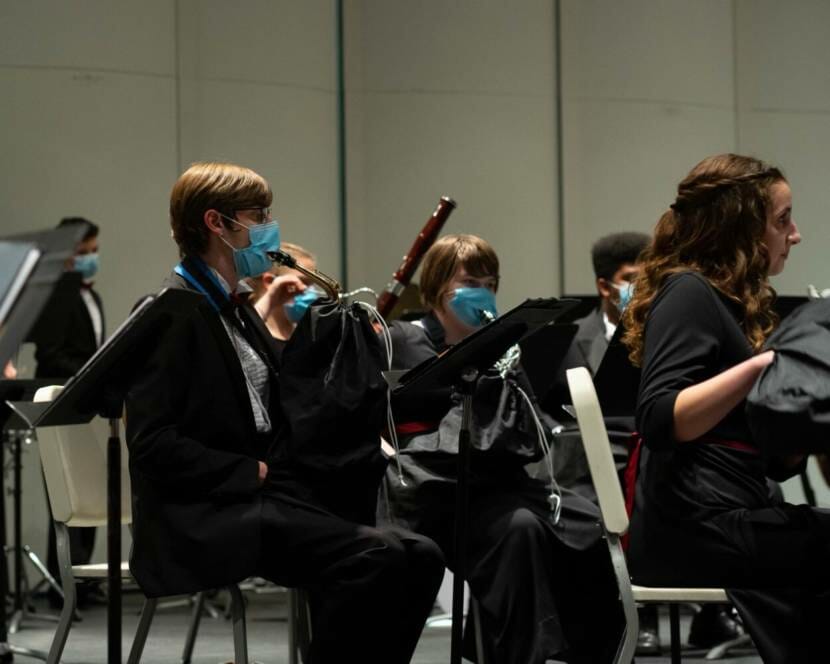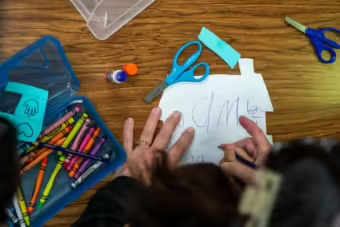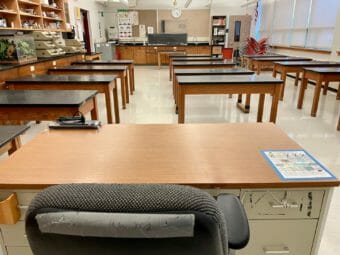
It’s been an odd school year across the country. Students and teachers in many places have spent the majority of the year learning from home.
But not in Ketchikan. After intense public pressure over the summer, the school board decided to start the school year much like any other — albeit with masks, health screenings, temperature checks, extra classroom space and a number of other pandemic precautions.
Students and teachers experienced the school year quite differently.
Last spring, Students in Ketchikan were about to leave for what was initially supposed to be a week-long spring break. Eventually, Alaska’s governor would close school buildings through the end of the school year.
Frankie Urquhart teaches science at Ketchikan’s Schoenbar Middle School. She had to rethink her entire lesson plan.
“How do I go from presenting material, hands-on labs — which is what we do a lot in my class — to, we are on Zoom?” she said. “It felt a lot like being a game show host, to be perfectly honest.”
To add flexibility, teachers were told not to take roll or teach new material.
“It was really, really hard and, you know, it was really frustrating for parents, it was frustrating for teachers and for students. And after a while the kids stopped tuning in, because they’re like, ‘There’s Ms. Urquhart tap dancing again. And we’ve seen her — she can’t dance,’” she said.
So how was it to be on the other side of the laptop screen? Henry Clark was a junior preparing for an AP test shortly after spring break.
“And that was really scary,” Clark said.
He was looking at colleges, so grades were important.
“I was really nervous about this year, this upcoming year, just because of all the education I was going to be missing,” he said.
Teachers were nervous, too. Urquhart was watching school board meetings as a parade of parents came forward to call on the school district to return students to classrooms full-time.
“It was frustrating, it was really frustrating. It was heartbreaking. It was mind numbing, and maddening — all of those things at once,” she said. “Because in the spring, people were praising teachers: ‘Oh, you guys are heroes, we’ve now tried teaching our own kids, and — aaahhh, take them back,’ you know, that kind of thing.”
But she said attitudes shifted over the summer as parents faced another year of having their kids at home.
“There was this tide that seemed to turn that was like, ‘Get in there and do your job. You signed up for this kind of thing.’ And, um, yeah, I did, I did sign up to teach children — but not during a pandemic,” Urquhart said.
Urquhart said she lives with someone at high risk for a serious case of COVID-19. She felt betrayed when the school board ordered teachers back in classrooms full-time with students.
“I felt like I got kicked in the stomach,” she said. “And I know a lot of other educators felt very similarly. And so yeah, it felt like a roller-coaster ride that I never wanted to get on. I am not a thrill seeker like that — I wanted to vomit, to be honest.”
The district later added safety measures, like temperature checks and mandatory masks for everybody in the buildings.
But still, she said, she was anxious about returning to the classroom in September. And that anxiety only multiplied after students returned. She said she wasn’t sure she’d be able to do her job effectively.
“If you want us to go back, I need to feel safe, as do my students, because we all talk about trauma in school. And the number one rule is, if you don’t feel safe, you can’t learn,” she said. “Well, that goes both ways. If I don’t feel safe, I can’t teach.”
Urquhart said that while some teachers were excited to return to face-to-face education, that wasn’t the case for everyone.
“I know a lot of my colleagues have been anxious. I know a lot of them have been depressed, for a lot of different reasons,” she said. “I’m finally coming out of it now. But this has been — I mean, there have been times where I just could not go to school. I just didn’t have it in me to face that day. And I have never had this kind of issue my entire life until this year.”
Clark, now in his senior year, said the pandemic has also weighed on his psyche.
“I have some family members that I was a little worried about, not going to lie. But for the most part, my main concern was not health,” Clark said. “Especially by the time we got to school, my main concern was my education and my mental health.”
He said friendships have suffered, especially his relationships with people in lower grades. Lunches were split up to reduce crowding in the cafeteria.

“If I have classes with them, I get to see them but during lunch I don’t get to so then they go I you know, I want to hang out with them, but I can’t so then it’s like, you know, you start to lose friendships you start starts to push and pull you like that,” he said.
And so Clark said even with the high school running at full capacity for most of the year, an overwhelming sense of exhaustion pervaded the campus, which locals call Kayhi.
“Out of all my four years at Kayhi, I never felt like such an aggressive and hostile community at times,” he said. “Not to not to make it sound horrible — because even now, I wouldn’t say it’s nearly that bad. But out of my four years, a lot more people are on edge.”
Urquhart said she turned a corner this spring. She said she and other teachers are feeling better.
“I’m feeling more like myself,” she said. “And I will tell you what: Getting that first vaccine — ”
Urquhart paused, lifted her hands, and imitated a chorus of angels singing.
“My anxiety went from, like, on a scale of 10, I was at like a freaking 12, and getting that vaccine, I went down to, like, a five. And it was the most amazing thing,” she said.
Now that she’s fully vaccinated she said feels safer in the classroom — and it’s reminded her how much she loves teaching.


